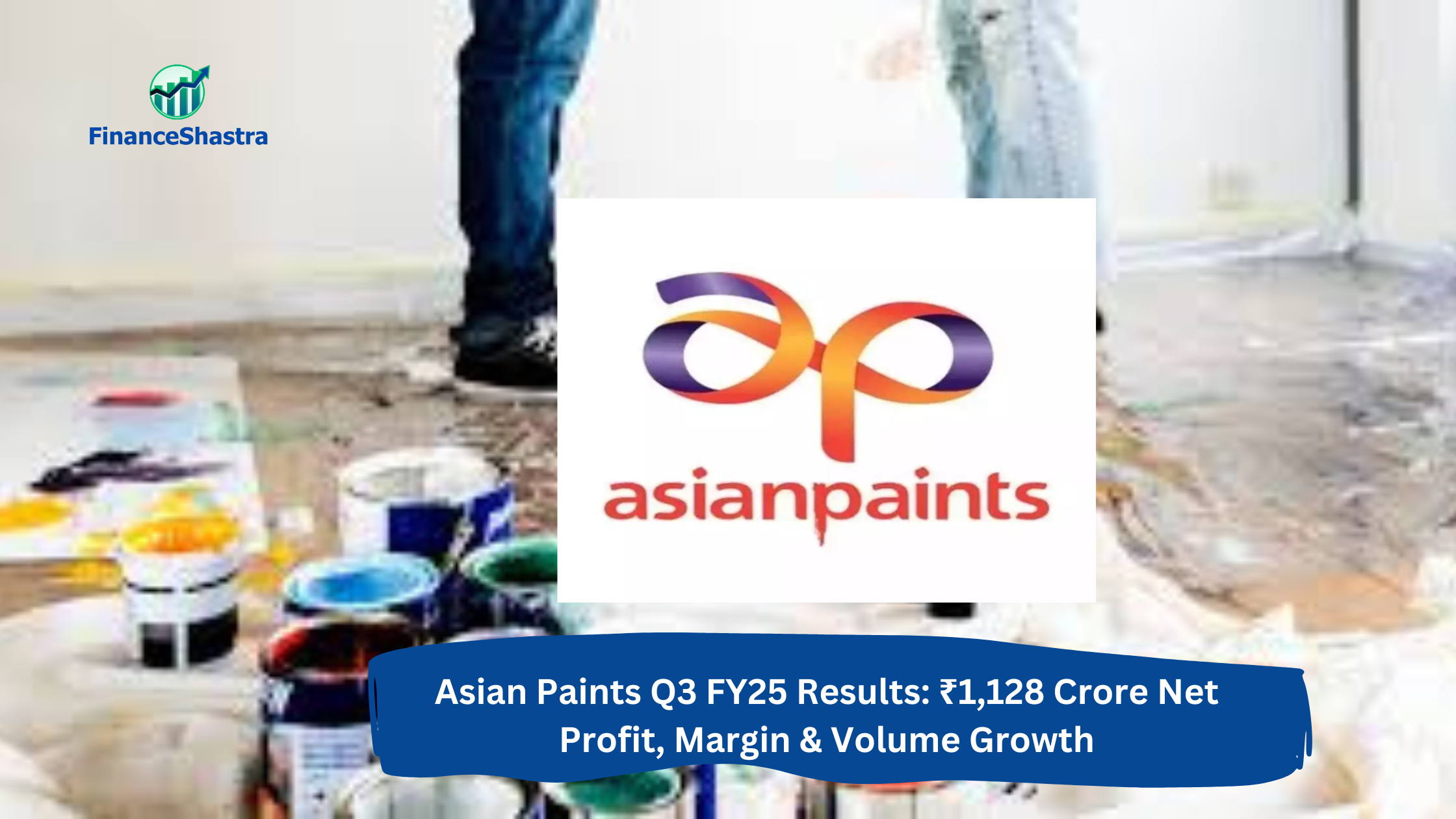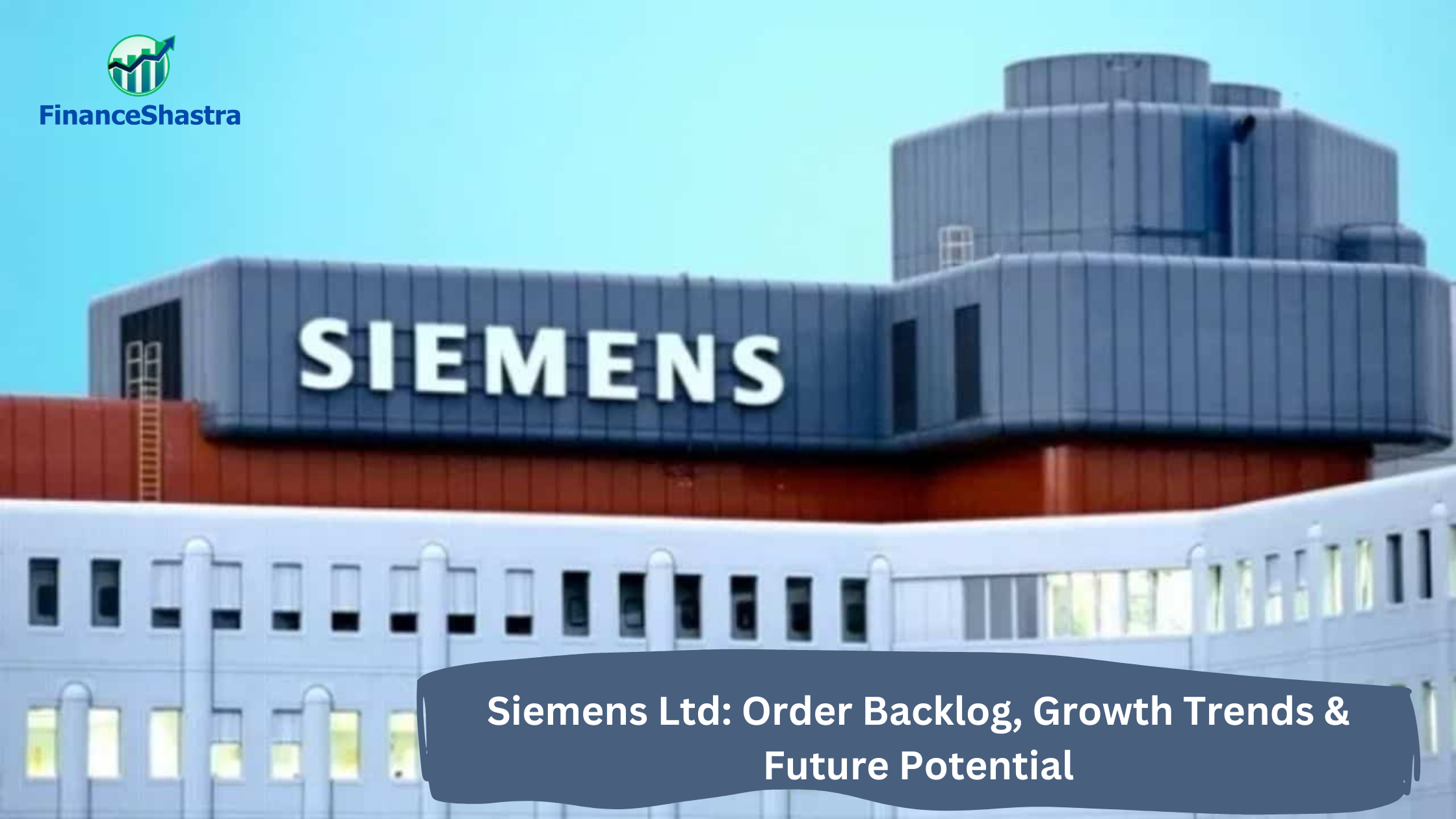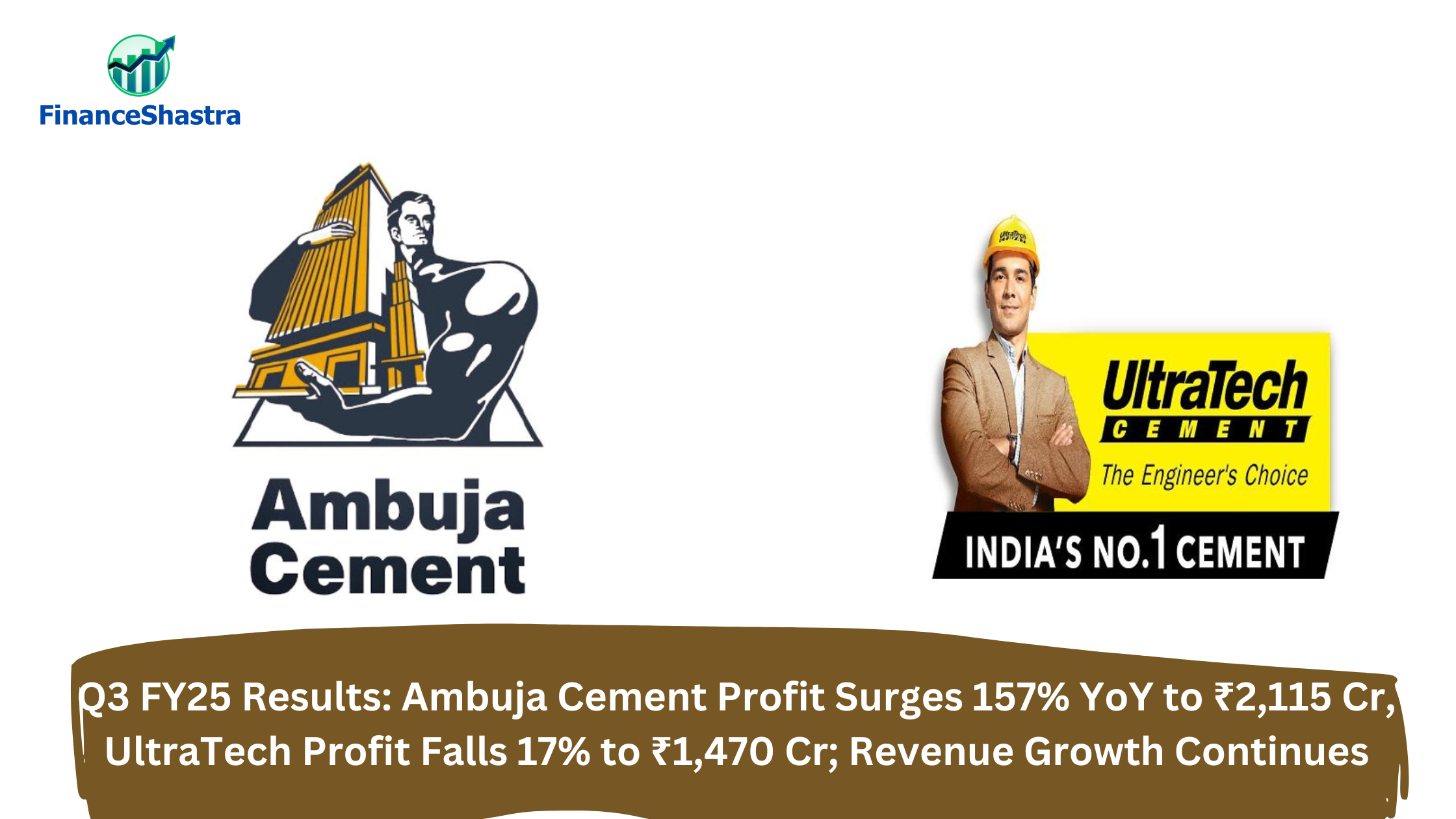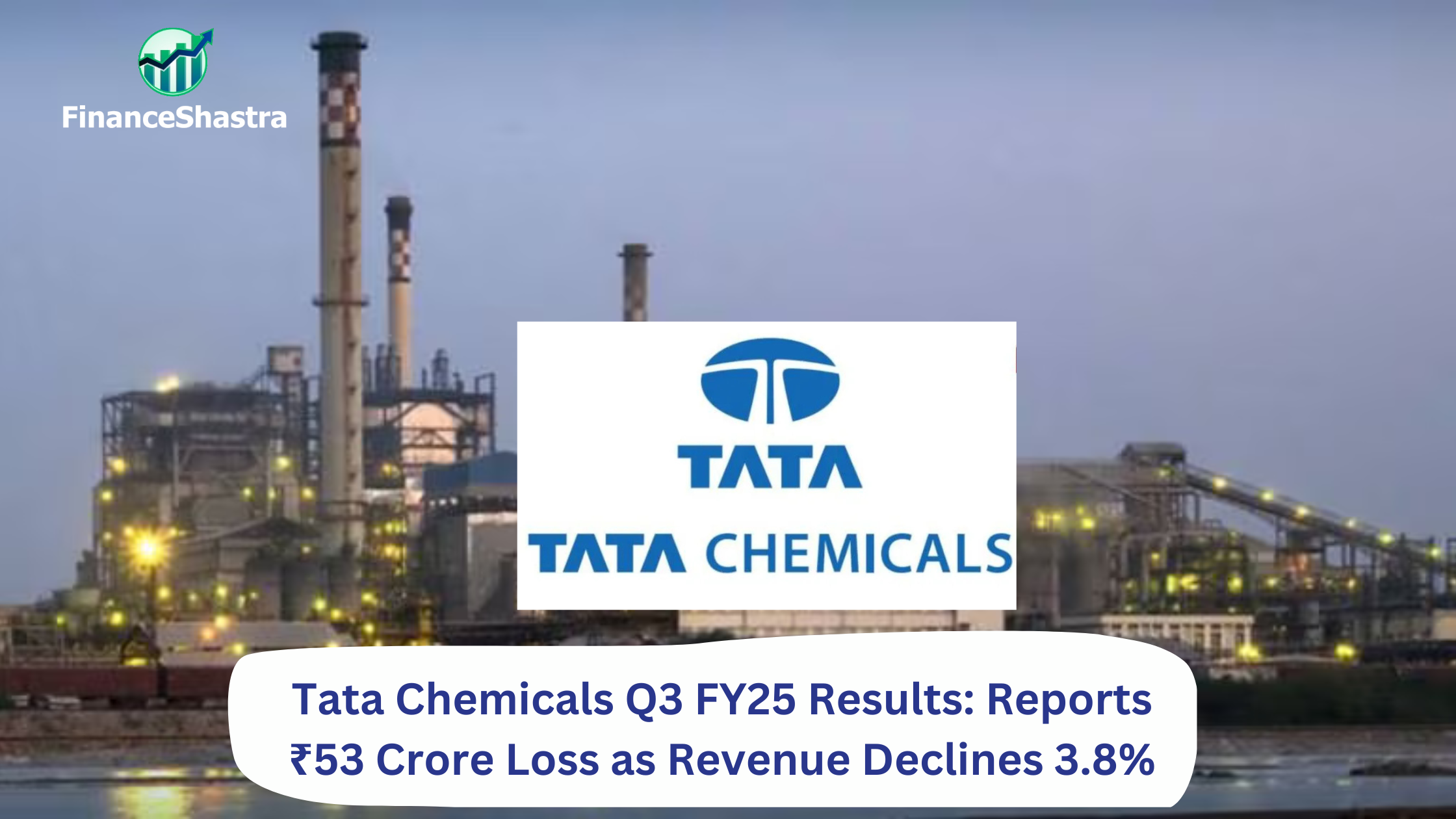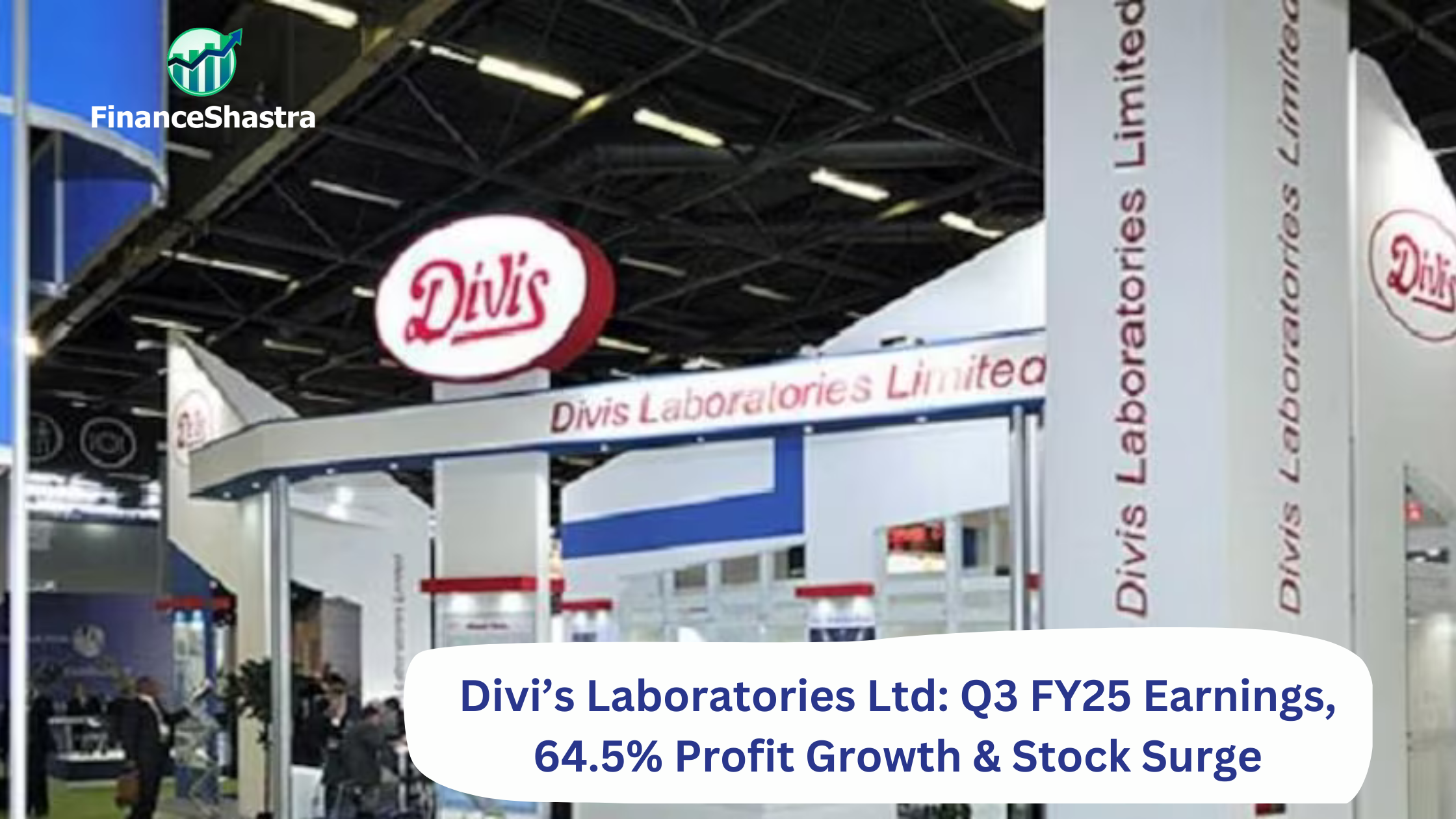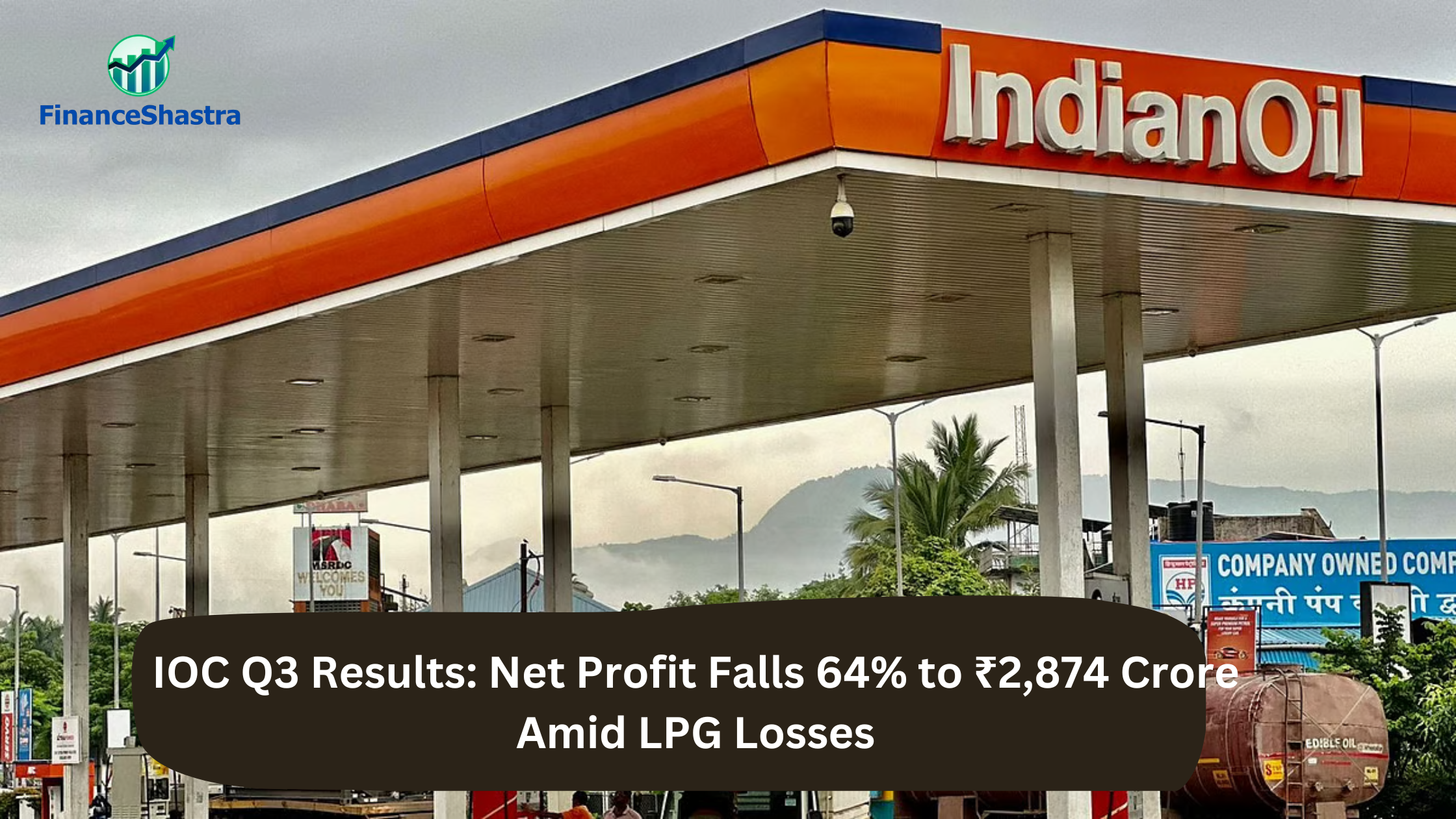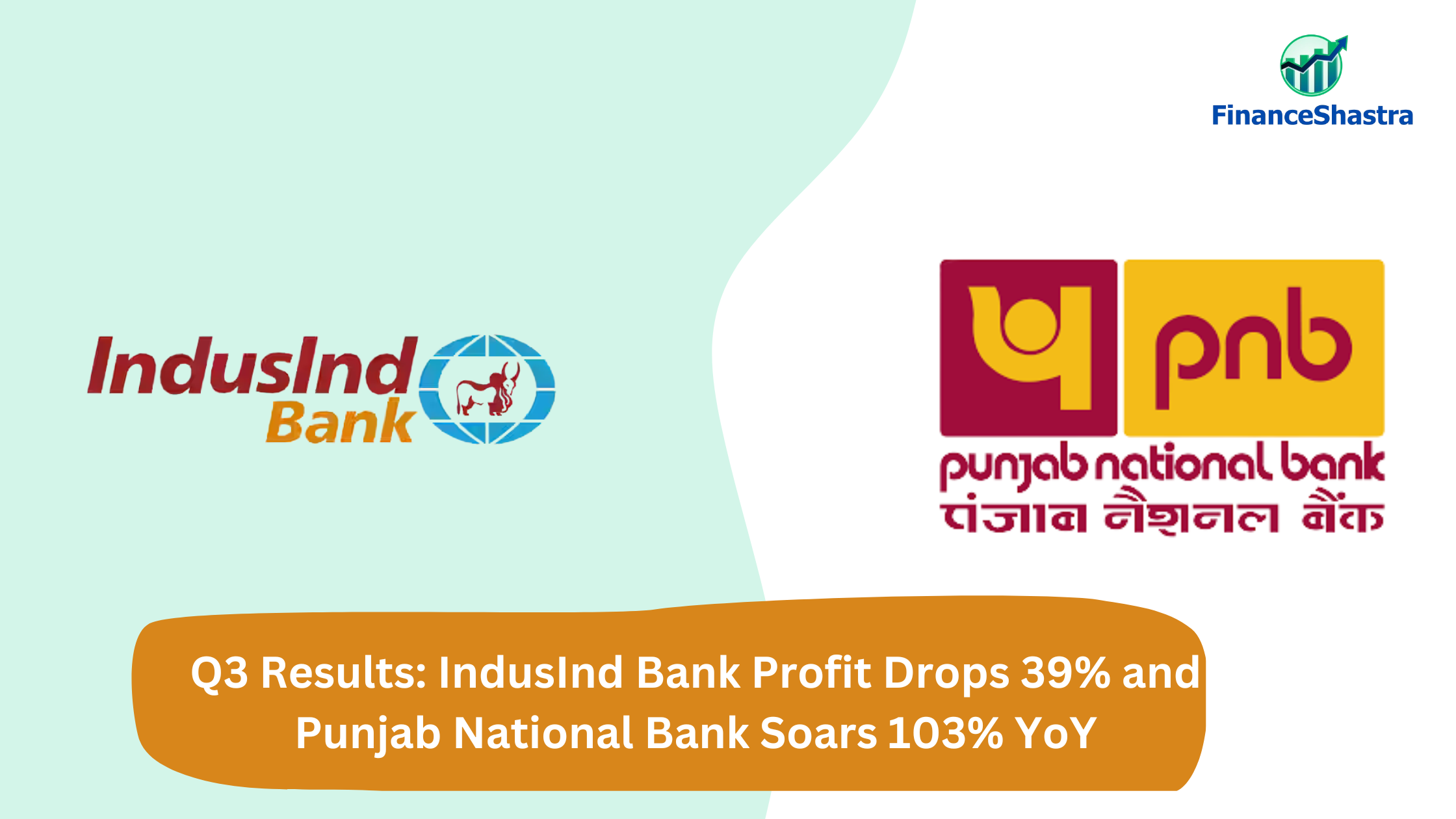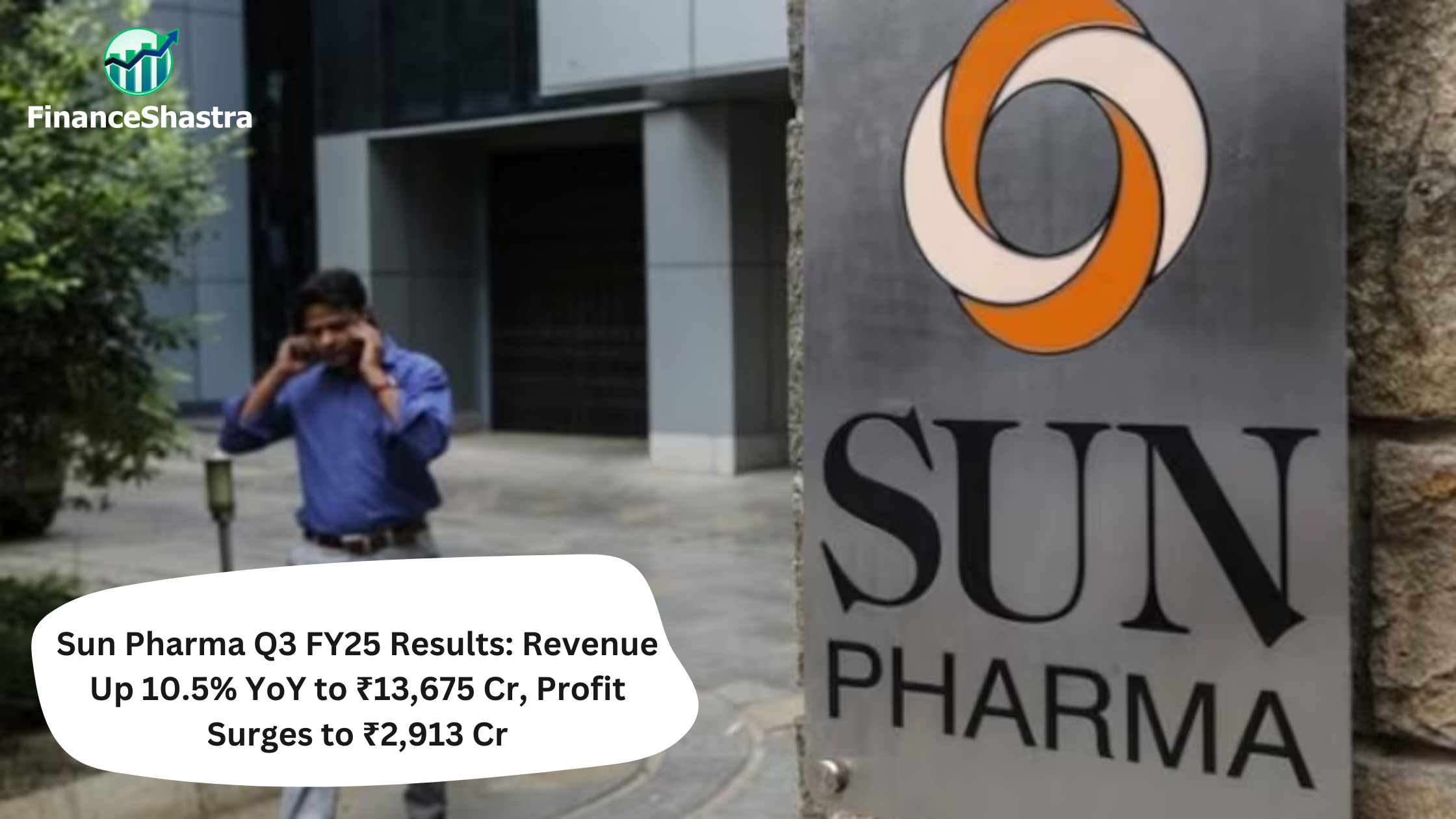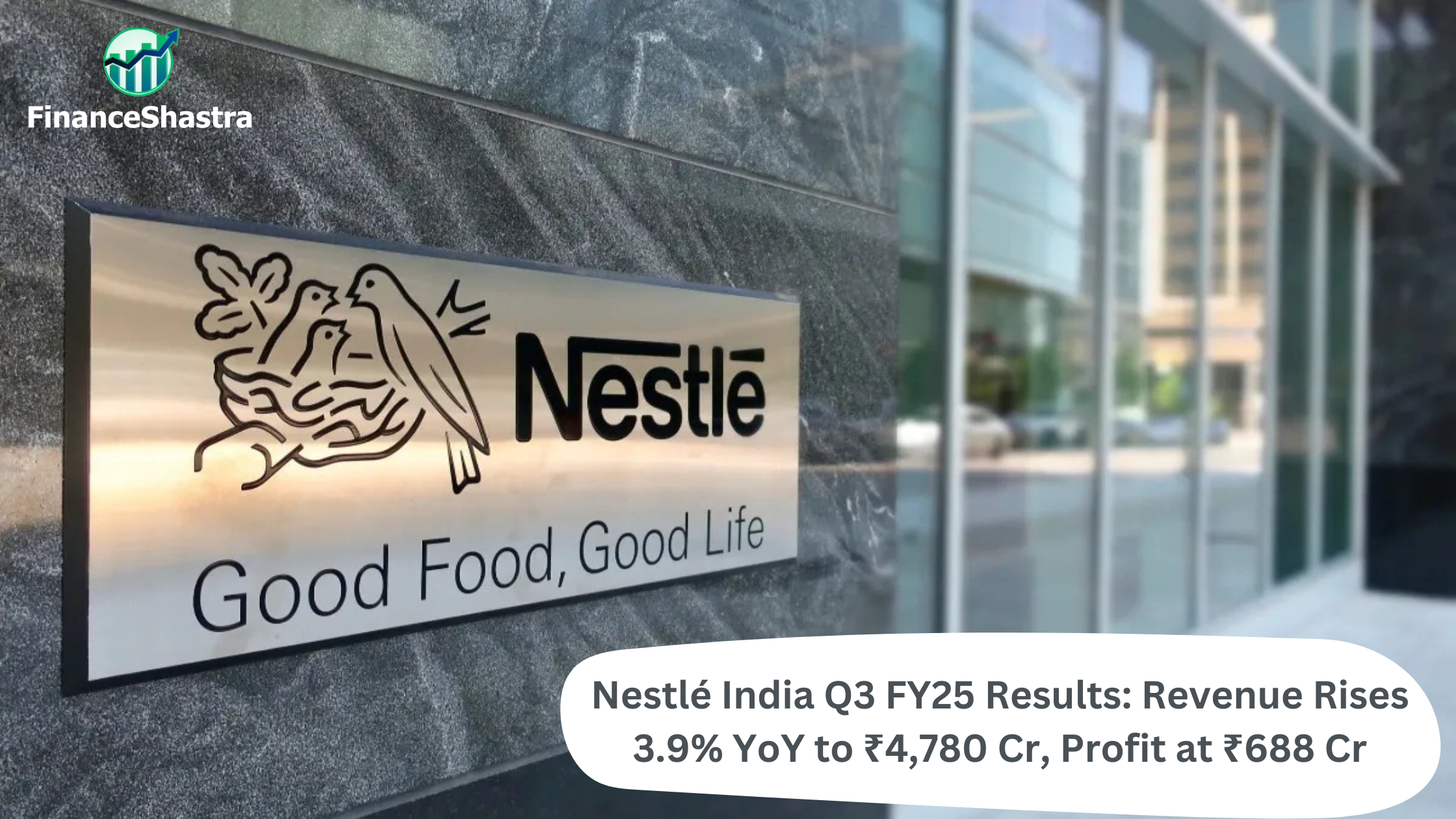Asian Paints Q3 FY25 Results: ₹1,128 Crore Net Profit, Margin & Volume Growth
Asian Paints Ltd: Overview
Asian Paints Ltd. is India’s largest paint manufacturer and one of the leading paint companies globally. Founded in 1942, it operates in more than 15 countries and has over 26 paint manufacturing facilities worldwide. It is No.1 or No.2 in its each segment, showing a great brand. Its product portfolio extends beyond decorative paints to include industrial paints, coatings, home decor, and waterproofing solutions, serving residential, commercial, and industrial markets. It has more than 140,000 customers and 3000+ dealers and 160,000+ retail touchpoints. The company has filed approx. 21 patents, Asian Paints has established itself as the most recognizable brand in India’s paint market. Through initiatives like the ‘Beautiful Homes Service’ and online colour consultation tools, Asian Paints enhances customer experience, leveraging digital solutions to strengthen customer engagement. The Indian paints industry is projected to grow at a CAGR of 11-13% over the next five years, aiming to reach a valuation of ₹1.2 lakh crores by 2028. Demand for water-based paints, low-VOC (Volatile Organic Compounds) products, and anti-bacterial coatings is on the rise, driven by eco-conscious and health-focused consumers. Major players, such as Asian Paints and Berger Paints, are continuously investing in R&D for product innovation and are expanding manufacturing capacities to meet rising demand. Infrastructure growth and government focus on boosting the manufacturing sector are expected to increase demand for industrial coatings, especially in construction, automotive, and machinery sectors. Crude oil derivatives are key inputs for paint manufacturing, and price fluctuations can impact profit margins.
Latest Stock News
In Q3FY25, the company faced challenges due to continued muted consumer demand, which was further impacted by weak festive sales, a slowdown in urban markets, and seasonal fluctuations. Despite this, the company continued expanding its distribution network, reaching approximately 169,000 retail touchpoints. Beautiful Homes Painting Services and Trusted Contractor Services gained strong traction and continued to grow. The Projects and Institutional Business witnessed a notable demand surge, particularly from the Factories and Builders segment, with the government sector showing positive momentum after three quarters of sluggish activity. Innovation remained a key focus, with new product launches contributing over 12% of overall revenue in Q3. Backward integration projects, including VAM-VAE and White Cement, progressed as planned. The company also launched a new campaign for Ultima Protek, promoting its ultra-durable exterior paint. However, certain segments faced profitability challenges, with the Kitchen segment reporting a PBT loss of ₹5 crore in Q3 compared to breakeven last year, and the Bath segment incurring a PBT loss of ₹7 crore, similar to the previous year. Weak urban consumption affected overall growth, which stood at 5% in INR terms but reflected a strong 17.1% growth in constant currency terms. Regionally, Africa faced setbacks due to currency devaluation in Egypt and Ethiopia, while the Middle East registered robust double-digit growth, with the UAE emerging as a key growth market.
Business Segments
- Decorative Business: The Company offers interiors and exterior wall paints, waterproof solutions, textured coatings, etc. with major products like Royale, TruCare, Apcolite, etc. It includes service of Beautiful Homes Service which shares about 4% in total revenue of company and includes services for kitchens, wardrobes, bath fittings, Sanitaryware, decorative lightings, rugs, furniture, etc. provides customers every possible services.
- International Business: Asian Paints has a global footprint with manufacturing operations and markets across 15+ countries in the Middle East, South Asia, Southeast Asia, and the Caribbean. While international operations currently represent a smaller portion of total revenue, they contribute to the company’s goal of becoming a leading player in emerging markets.
- Industrial Business: The Company operates in the industrial coatings segment through a 50:50 joint ventures with PPG Industries Inc. It offers custom-formulated products for the automotive and industrial sectors, including automotive, marine, and packaging coatings, as well as industrial protective coatings.
Subsidiary Information
- Asian paints international Pvt Ltd.: Asian Paints International Private Limited (“APIPL”), Singapore, is a wholly-owned subsidiary of the Company and is the holding company for all of its subsidiary companies carrying out operations overseas. The principal activities of APIPL are those of investment holding and management.
- Asian Paints (Nepal) Pvt Ltd: Asian Paints (Nepal) Private, is a subsidiary company of the Company. Its principal business is the manufacturing and selling of paint products in Nepal. The revenue of AP Nepal was ₹335.04 crores with de-growth of 38.5% YoY.
- Obgenix Software Pvt Ltd: It is popularly known by the brand name “White Teak” is a subsidiary company of the Company. White Teak is engaged in the business of decorative lighting products, fans and other décor accessories. The revenue of White Teak was ₹133.43 crores with growth of 23.0% YoY.
- Weather seal Fenestration Pvt Ltd: It is a subsidiary company of the Company. Weatherseal is engaged in the business of uPVC windows and doors. The revenue of Weatherseal was ₹51.68 crores growth of 110.0% year on year.
Q3 FY25 Earnings
- Revenue of ₹8549 crore in Q3 FY25 down by 6.08% YoY from ₹9103 crore in Q3 FY24.
- EBITDA of ₹1637 crore in this quarter at a margin of 19% compared to 23% in Q3 FY24.
- Profit of ₹1128 crore in this quarter compared to a ₹1475 crore profit in Q3 FY24.
Financial Summary
| Amount in ₹ Cr | Q3 FY24 | Q3 FY25 | FY23 | FY24 |
| Revenue | 9103 | 8549 | 34489 | 35495 |
| Expenses | 7047 | 6913 | 28229 | 27910 |
| EBITDA | 2056 | 1637 | 6260 | 7585 |
| OPM | 23% | 19% | 18% | 21% |
| Other Income | 186 | 193 | 431 | 821 |
| Net Profit | 1475 | 1128 | 4195 | 5558 |
| NPM | 16.2% | 13.2% | 12.2% | 15.7% |
| EPS | 15.1 | 11.6 | 42.8 | 56.9 |

